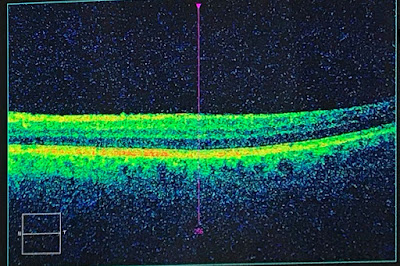The conference this weekend set me behind on lots of things here. So let me catch up on the invention fair at my granddaughter's school. This is a K-6 optional program where all the kids are in two giant connected rooms. There's an emphasis on independent learning and working cooperatively. This is part of the local school district. Sort of like Steller in Anchorage, or Polaris.
They have a three year cycle: 1. science fair; 2. environmental project; and 3. invention fair.
All the kids have to come up with a problem. Figure out a solution to the problem (the invention). The presentation at the fair is supposed to cover the process - problem, solution, steps to the solution, materials used, etc.
So here are a few. I don't post pictures of kids except in rare circumstances with parent permission so the focus is on the project here.
This is a special backpack to carry school papers, using a paper sized folder so papers don't get all wrinkled on the way to and from school.
I need to say there were maybe 50 or 60 projects by first graders to six graders.
This one quantified the number of plastic, non-biodegradable sandwich bags a kid uses a year and talks about the time it takes for the plastic to degrade (400-100 years), the toxic materials in the plastic bag you wrap your sandwich in, and the harm bags do to the animals that ingest them.
And I'm afraid I can't remember the edible material they used as sandwich bags. It seems that side of the-poster is blocked by a head. It isn't seaweed because I thought of that as a possibility and they used something else.
This one was my personal favorite. (After my granddaughter's, of course.) The inventor explained that her mom kept getting on her for leaving the light on in her room. So she designed a little M&M holder (in the middle) contraption to put above the light switch.
And when you turn off the light switch, it causes an M&M to drop out to reward the energy conscious kid.
Here you can see an M&M just released from turning off the switch.
All the kids were at the projects and eager to explain them in detail to anyone who asked. Even people who didn't ask but were close by. I know that some of these kids would not willingly talk to a strange adult, but they were so into their projects they all just wanted to tell me everything.
The student who made the Mopping Slippers has a dog that regularly comes into the house with muddy feet. So she made these slippers with sponges and scrubbers on the bottom that she can wear that help clean up the mess when she walks around. (She being the student, not the dog.)
I did ask whether the dog jumps on her bed. She sighed, said yes, but you just have to wash the sheets.

This was another popular invention - a new cookie recipe. She tried a number of different new types of cookies and as you can see on the poster, Mango won.
Not only is she a good inventor (no one else seemed to think about inventing a new recipe) but also a good marketer. She had pieces of the mango cookies there to taste. And I can vouch for these cookies.
This student's problem related to reading in the dark. So she invented a book mark that had a light on it.
You can see it at the bottom.
Another student had a very similar idea. He said when he wanted to read at night in bed under the cover, he could never find the light. So he invented a strap that goes around the book - which I think could also be used as a book mark - that holds a small light.
Another book related invention solved the problem of arms getting tired hold the book. He took a bike helmet and put two extensions and connected them to the sides of the helmet. At the end, they had clips to hold a book. So you could sit with the book held out about 15 inches in front of you.
And this student enthusiastically explained his project. When I jumped with his skateboard, it often falls away and he falls off. So he invented a magnet to attach to his shoes and some metal on the skateboard. He demonstrated the electromagnet he made with the battery and the nail wrapped in wire. He could then turn the magnet on and off in his hand.
And finally my granddaughter's invention. Her problem was that her arms get cold, so she wanted to invent arm warmers for her forearms, sort of like leg warmers. She used toilet paper rolls (with a slit so they could stretch for bigger forearms) and material from old pants and tights to wrap around the rolls.
As demonstrated in this project, the instructions were to recycle materials for the poster boards and most projects did that.
This is a reminder that if you let kids chase what they're interested in, they've got all kinds of creativity and enthusiasm.
























































